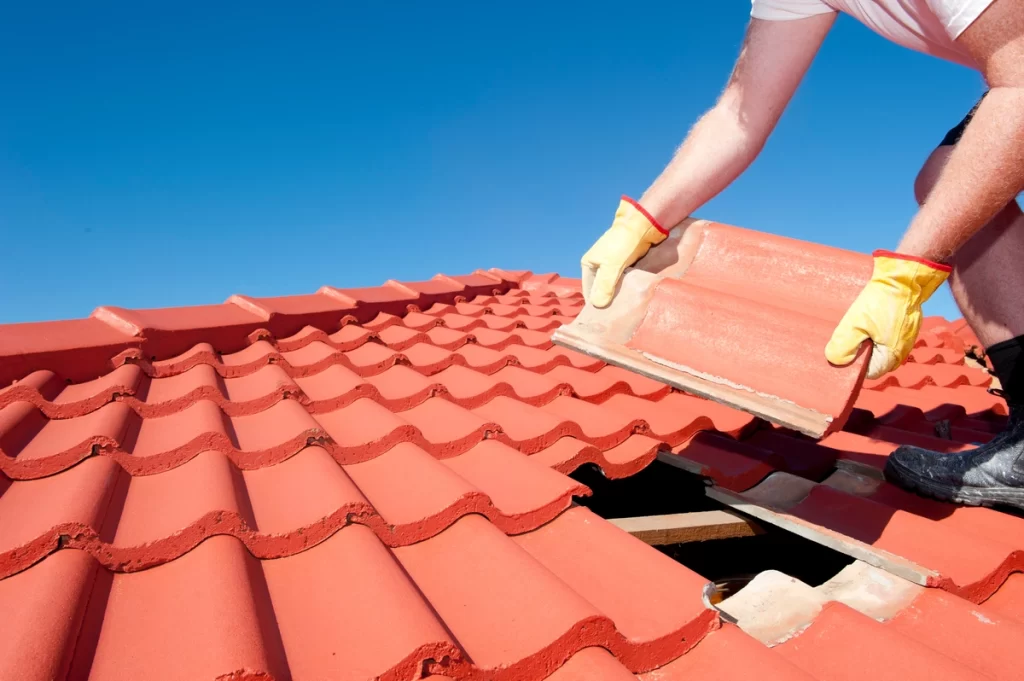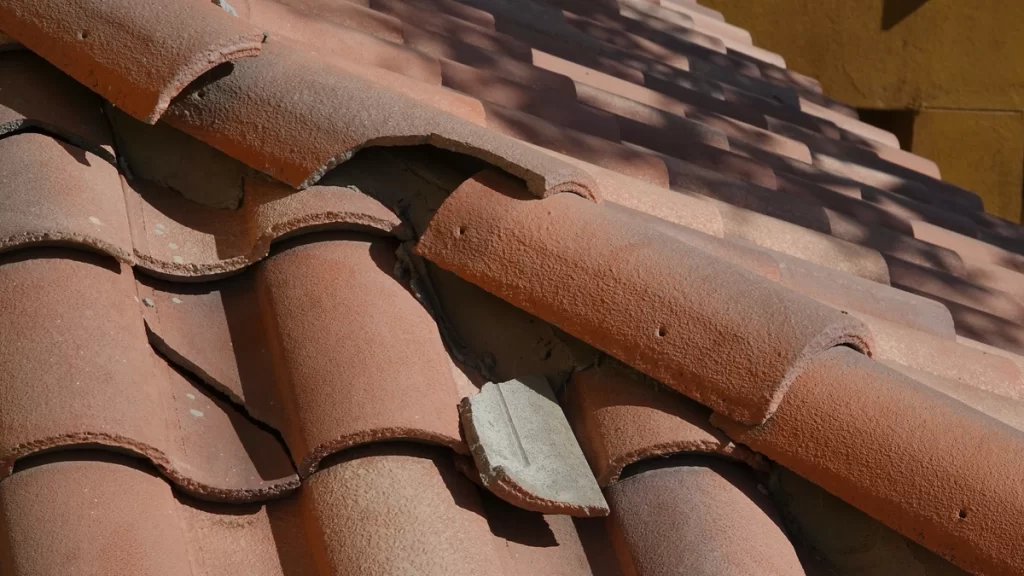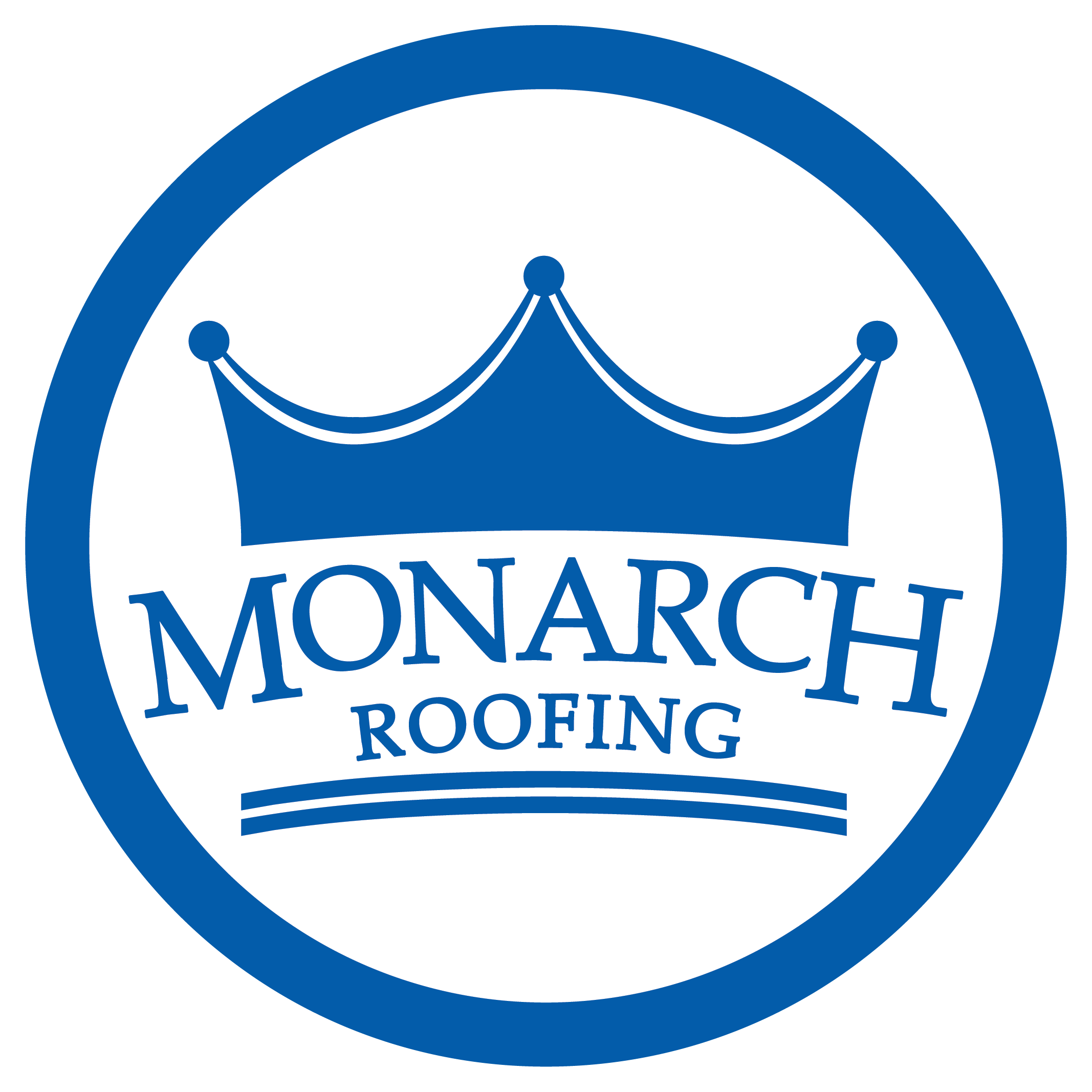Tile roofs are known for their durability and timeless appeal, adding an elegant and traditional touch to homes. However, like any roofing material, they require maintenance and repairs to ensure they remain in top condition.
Are you considering whether or not to install a tile roof?
In this blog post, we’ll explore:
- The pros and cons of tile roofing
- The various types of tile roofing
- Signs of tile roof damage
- How to repair a tile roof
- When it’s best to call a professional
Keep reading to become a tile roof repair expert!

Pros and Cons of Tile Roofing
Tile roofing has been used for centuries and is still a popular choice for homeowners today. Before diving into the repair aspect, let’s take a closer look at the advantages and disadvantages of tile roofing.
Pros:
- Durability: Tile roofs are known for their longevity and can last for 50-100 years or more, depending on the type of tile used.
- Aesthetic Appeal: Tiles come in a variety of shapes, colors, and textures, allowing homeowners to choose a style that complements their home’s architectural design.
- Low Maintenance: Tile roofs require minimal maintenance, and individual damaged tiles can often be replaced without affecting the entire roof.
- Energy Efficiency: The thermal properties of tile can help regulate indoor temperatures, reducing energy consumption.
- Fire Resistance: Tiles are non-combustible and provide excellent fire protection for your home.
Cons:
- Cost: Tile roofing can be more expensive upfront compared to other roofing materials.
- Weight: Tiles are heavier than most roofing materials, so your roof structure must be able to support the added weight.
- Fragility: While durable, tiles can crack or break due to extreme weather conditions, falling debris, or foot traffic.
- Complex Installation: Proper installation requires expertise to ensure the tiles are correctly placed and sealed.
4 Types of Tile Roofing
There are several types of tile roofing materials to choose from, each with its unique characteristics and benefits:
1) Clay Tiles:
Clay tiles are known for their timeless beauty and natural color variations. They are durable and can withstand harsh weather conditions. They are available in various styles, including Spanish, Mission, and French.
2) Concrete Tiles:
Concrete tiles are a more affordable alternative to clay tiles and come in a wide range of colors and styles. They are also highly durable and can mimic the appearance of other roofing materials, such as wood or slate.
3) Slate Tiles:
Slate tiles are renowned for their elegance and longevity. They are natural stone tiles that can last for generations. However, they are heavy and require a sturdy roof structure.
4) Metal Tiles:
Metal tiles offer the durability of metal roofing with the appearance of traditional tiles. They are lightweight, making them a suitable choice for homes with weaker roof structures.
Signs of Tile Roof Damage

Detecting damage to your tile roof early is crucial to preventing more extensive problems. Here are some common signs of tile roof damage to look out for:
- Cracked or Broken Tiles: Visibly cracked or broken tiles are a clear sign of damage. These should be addressed promptly to prevent water infiltration.
- Loose or Displaced Tiles: Tiles that have become loose or shifted out of place can expose the roof’s underlayment to the elements.
- Leaks or Water Stains: Water stains on your ceilings or walls are a telltale sign of roof leaks. Investigate the source of the leak to determine if it’s related to damaged tiles.
- Moss or Algae Growth: Moss, algae, or lichen growth on your roof can indicate trapped moisture, which can lead to tile deterioration over time.
- Granule Loss: If you have concrete tiles, loss of granules can reduce their protective coating, making them more susceptible to damage.
How to Repair a Tile Roof in 8 Steps
Repairing a tile roof is a manageable task for homeowners who are comfortable with DIY projects. Here’s a step-by-step guide to help you get started:
Tools and Materials You’ll Need:
- Replacement tiles
- Roofing cement or adhesive
- Roofing nails
- Hammer
- Roofing felt
- Pry bar or flat-blade shovel
- Caulk gun
- Roofing sealant
1) Safety First:
Always prioritize safety. Wear appropriate gear, such as non-slip shoes and gloves, and work on a stable surface using a ladder that’s securely anchored.
2) Identify the Damaged Tiles:
Inspect your roof for damaged or missing tiles. Mark their locations for replacement.
3) Remove the Damaged Tiles:
Use a pry bar or flat-blade shovel to carefully lift the surrounding tiles and expose the damaged ones. Gently remove the damaged tiles, being cautious not to damage neighboring tiles.
4) Replace the Tiles:
Insert new tiles into the vacant spots, ensuring they align correctly with the surrounding tiles. Secure them in place with roofing cement or adhesive and nails.
5) Re-Seal the Roof:
Apply roofing sealant to the edges of the replaced tiles to prevent water infiltration. Re-seal any lifted tiles that were not replaced.
6) Check for Additional Damage:
Inspect the entire roof for any other damaged tiles, and repeat the above steps as needed.
7) Replace Roofing Felt:
If your roof has roofing felt underneath the tiles, inspect it for damage. If necessary, replace damaged sections to maintain the roof’s integrity.
8) Clean and Maintain:
After completing the repairs, clean your roof and gutters to prevent debris buildup and ensure proper drainage.
When to Call a Professional
While minor tile roof repairs can be done by DIY enthusiasts, some situations warrant the expertise of a professional roofer:
- Extensive Damage: If a significant portion of your roof is damaged, it’s best to have a professional assess the situation. They can determine if a partial or complete roof replacement is necessary.
- Structural Issues: If you notice sagging or structural problems with your roof, it’s crucial to call a professional immediately, as this could be a safety hazard.
- Roof Leaks: If you’re experiencing persistent roof leaks, it’s important to have a professional locate and address the source of the problem to prevent further damage to your home’s interior.
- Complex Repairs: Some tile roof repairs, such as addressing underlayment issues or complex flashing problems, require specialized knowledge and equipment that professionals possess.
Work With an Expert Tile Roof Repair Contractor
Tile roofs are an attractive and durable roofing option, but like any roofing material, they require maintenance and occasional repairs to ensure they continue protecting your home. By understanding the pros and cons of tile roofing, recognizing signs of damage, and knowing when to repair it yourself or call a professional, you can keep your tile roof in excellent condition and enjoy its longevity and timeless beauty for years to come.
Have more questions about your tile roof repair cost? Monarch Roofing can help! Contact us today to get all the info!





